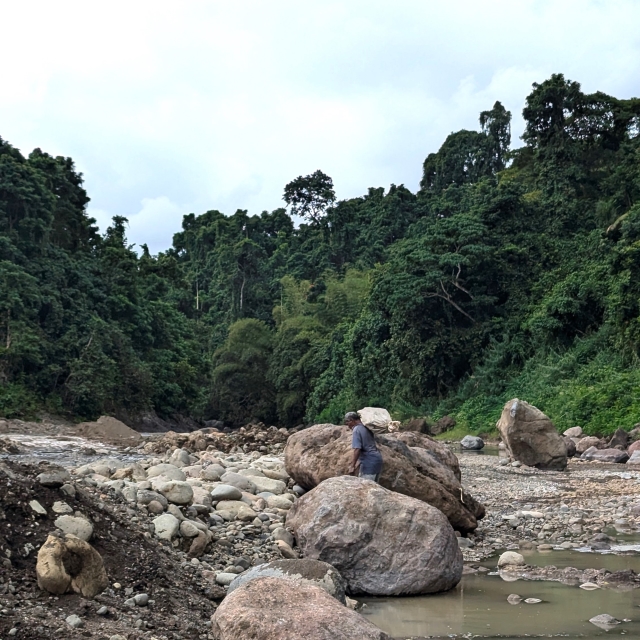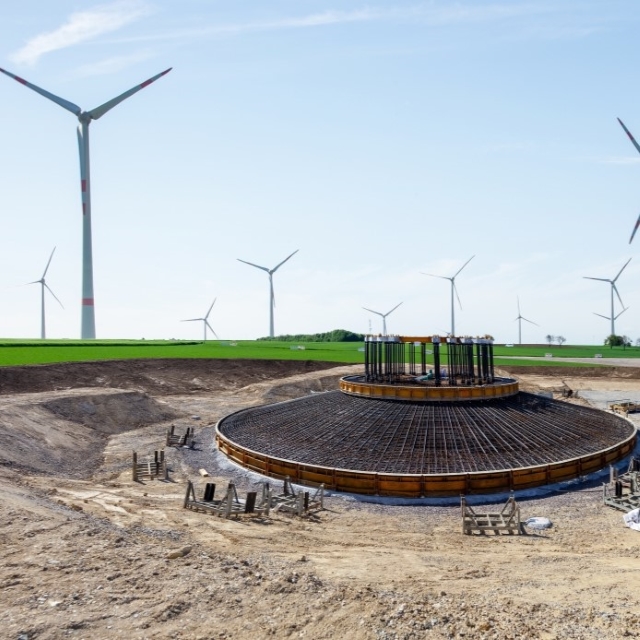Forget lithium, copper and rare earths – new research has found that sand and aggregates are the real secret ingredient of the renewable energy transition.
Bora Aska, lead author of a new Nature Reviews Biodiversity paper and a PhD candidate at The University of Queensland’s Sustainable Minerals Institute (SMI), explained that despite the enormous demand for sand and aggregate, they rarely feature in sustainability assessments of the energy transition away from fossil fuels.
“Sand and aggregates are needed for the concrete that goes into the foundations of wind turbines and solar panels, as well as the walls of hydroelectric dams needed for pumped hydro storage,” she said.
“Aggregate mining often flies under the radar despite its significant environmental and social impacts.”

Renewables push can put biodiversity at risk
There are 13,581 species threatened by mining and quarrying activities globally, according to International Union for Conservation of Nature (IUCN) Red List data.
Aska, her colleagues at the Global Centre for Mineral Security and her international collaborators found that biodiversity impacts from aggregate extraction can range from direct habitat loss and degradation to broader disturbances such as traffic, noise, dust, and water pollution.
“Mining in sensitive areas can disrupt these systems, threatening both biodiversity and human well-being,” Aska said.
“The mining of minerals for renewable energy transition has environmental impacts, but it is worth noting that this is nowhere near the cost to biodiversity and communities from continuing to extract fossil fuels.”
Dr. Aurora Torres, corresponding author of the paper and a researcher at the University of Alicante in Spain, explained that aggregates are often seen as abundant, low-value, and locally sourced, which makes them less visible in global discussions around resource extraction for the energy transition.
“Aggregate extraction is rarely linked explicitly to environmental or biodiversity concerns,” Dr Torres said.
“But these activities can fragment landscapes, alter hydrology, and introduce invasive species, with consequences that may reach well beyond the immediate extraction site.
“There are significant data gaps on extraction sites and volumes consumed, making it challenging to quantify impacts at a large scale.”

The costs of climate adaptation
In Fiji, river sand and gravel mining has disrupted ecosystems and traditional livelihoods, illustrating how local communities can bear the environmental costs of materials used for climate adaptation elsewhere – and Aska has been able to see first-hand these impacts in her own fieldwork.
“So many things around us are made from concrete, but we never stop to think, where it comes from… and then you arrive in Fiji and see the impact that river sand mining has had on the environment and social dynamics of communities there,” she said.
For more on Pacific aggregates: https://smi.uq.edu.au/article/2025/08/development-minerals-pacific-media-release-quaterly-newsletter
Professor Daniel Franks, director of SMI’s Global Centre for Mineral Security, explained that the study findings revealed how the energy transition depends on a much broader set of minerals than commonly recognised — and that true mineral security must ensure access for all.
“Mineral security isn’t only about lithium and cobalt for high-tech economies... It’s about making sure all people have access to the minerals they need for shelter, sustenance, mobility, communication – and clean energy,” he said.



